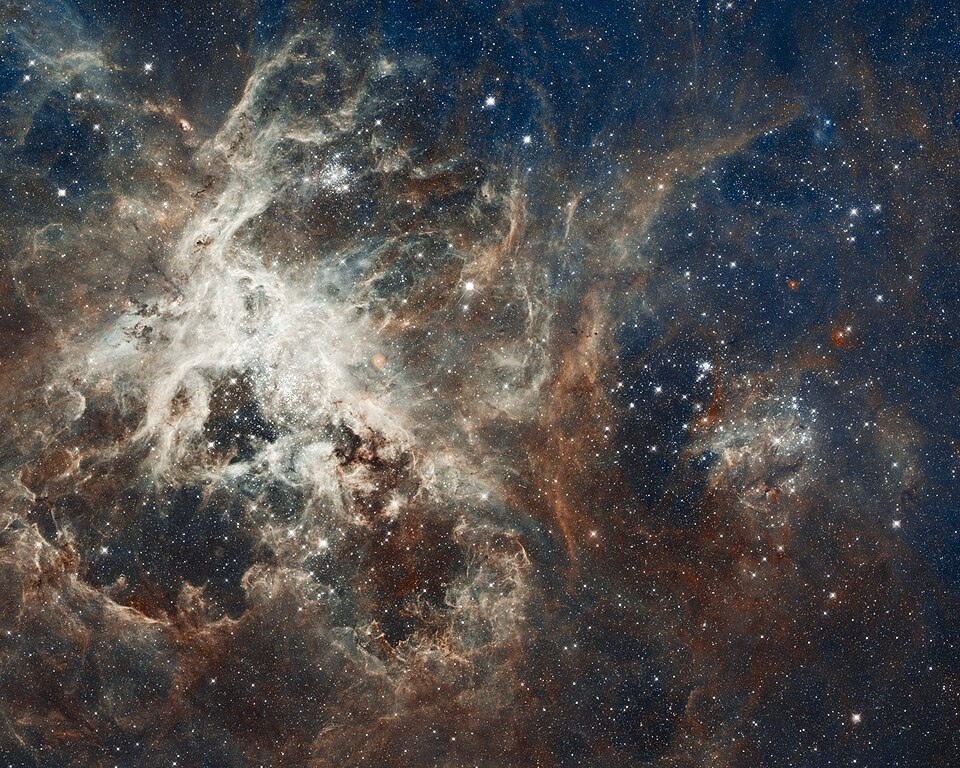Astronomers Unravel Origins of Runaway Stars in Tarantula Nebula

In a groundbreaking study, astronomers have identified the origins of three massive runaway stars ejected from the R136 star cluster within the Tarantula Nebula, located in the Large Magellanic Cloud (LMC). The research, published in the prestigious journal Physical Review Letters on July 16, 2025, reveals that the ejection events occurred approximately 60,000 years ago and involved five stars, a finding that challenges previous understandings of star dynamics in such environments.
The Tarantula Nebula, renowned for its vibrant stellar formations, hosts the R136 cluster, which is characterized by an extraordinarily dense concentration of massive O-type and Wolf-Rayet stars. According to Dr. Simon Portegies Zwart, Professor of Numerical Star Dynamics at Leiden University, and lead author of the study, the ejection of these stars was reconstructed using precise data from the European Space Agency's Gaia mission. This data enabled the team to reverse-engineer the stellar interactions that led to the expulsion of the stars, culminating in a detailed analysis of their dynamics.
"The deterministic nature of the Newtonian dynamics in the scattering allows us to reconstruct the encounter that ejected Mel 34, the last of the stars to be expelled," stated Dr. Portegies Zwart. The researchers found that the binary star Mel 34, alongside another binary star, Mel 39, and a third star, VFTS 590, collectively possess over 530 solar masses. This significant mass contributes to the intense luminosity that characterizes the Tarantula Nebula, illuminating its surroundings and making it a prime area for astronomical study.
Prior research indicated that between 23% and 33% of the most luminous stars born in R136 are classified as runaway stars. However, the recent findings indicate that the ejection process is more complex than previously thought, with the involvement of five stars rather than the anticipated two or three. This complexity suggests a chaotic formation environment within the cluster, where gravitational interactions are frequent and can lead to unexpected outcomes.
In the study, the researchers utilized Gaia's astrometric data to trace the trajectories of the ejected stars back to their origin in the R136 cluster. The simulations revealed that Mel 39, a binary star system with a companion star of 80 solar masses, is escaping the cluster at a velocity of approximately 64 km/s. The other binary, Mel 34, consists of two massive stars with 139 and 127 solar masses, respectively. The collective motion of these stars paints a picture of a dynamic stellar environment marked by gravitational interactions that are not fully understood.
Dr. John Smith, an astrophysicist at the Massachusetts Institute of Technology, commented on the implications of this research. "These findings not only enhance our understanding of stellar evolution but also highlight the importance of studying star clusters as natural laboratories for observing the processes that govern star formation and ejection."
The ejected stars are projected to end their life cycles in supernova explosions within the next five million years, significantly impacting their surrounding environments. As Dr. Portegies Zwart noted, "The resulting black hole binaries from these supernovae are not expected to merge within a Hubble time, pointing to a long-term evolution of these stellar remnants."
This study underscores the dynamic nature of the R136 cluster and its role as a vital research area within the LMC. With 55 runaway stars identified, R136 serves as an invaluable resource for astronomers aiming to deepen their understanding of massive star clusters and their evolution. The findings invite further exploration into the mechanisms that drive star ejections and the broader implications for our comprehension of stellar dynamics in the universe.
Advertisement
Tags
Advertisement





